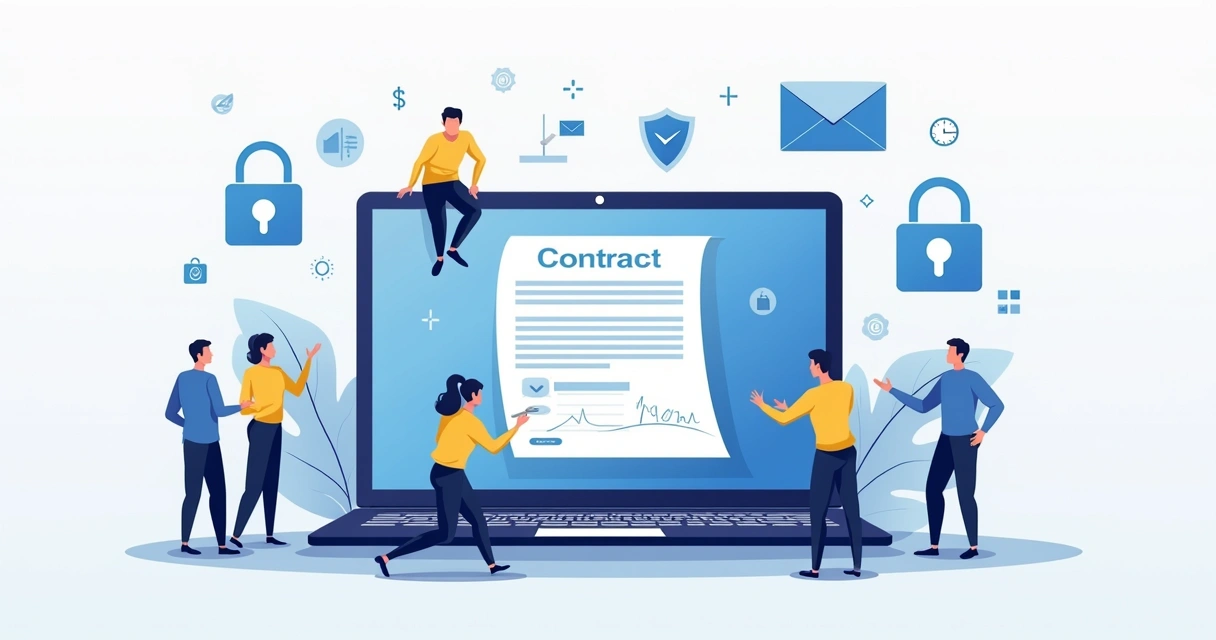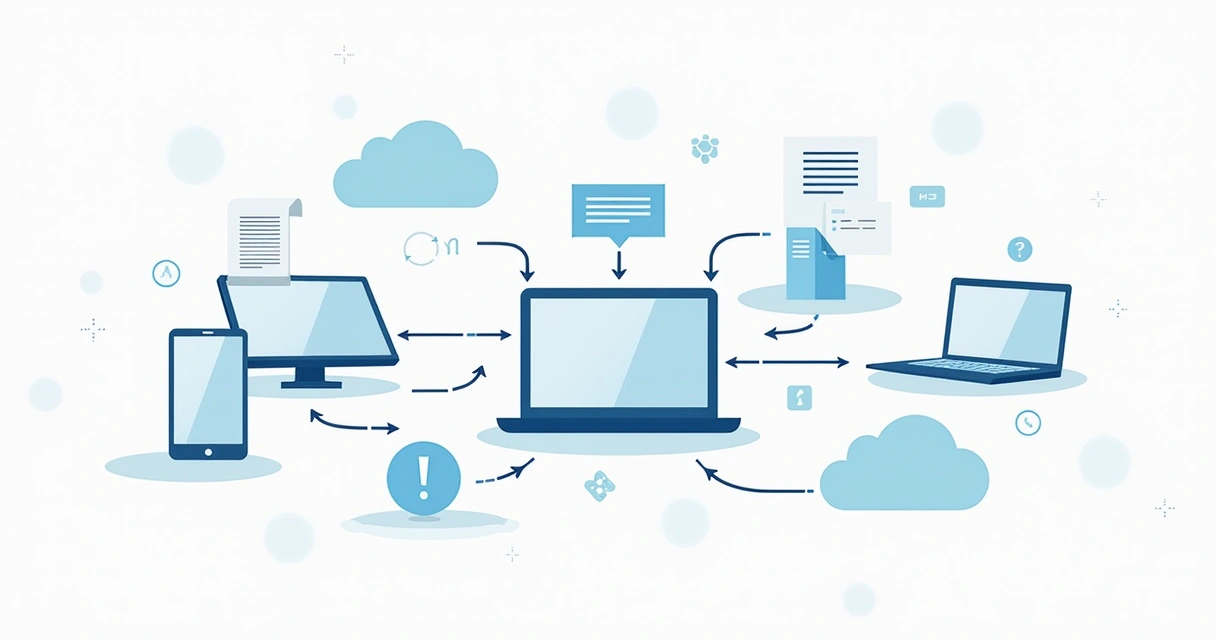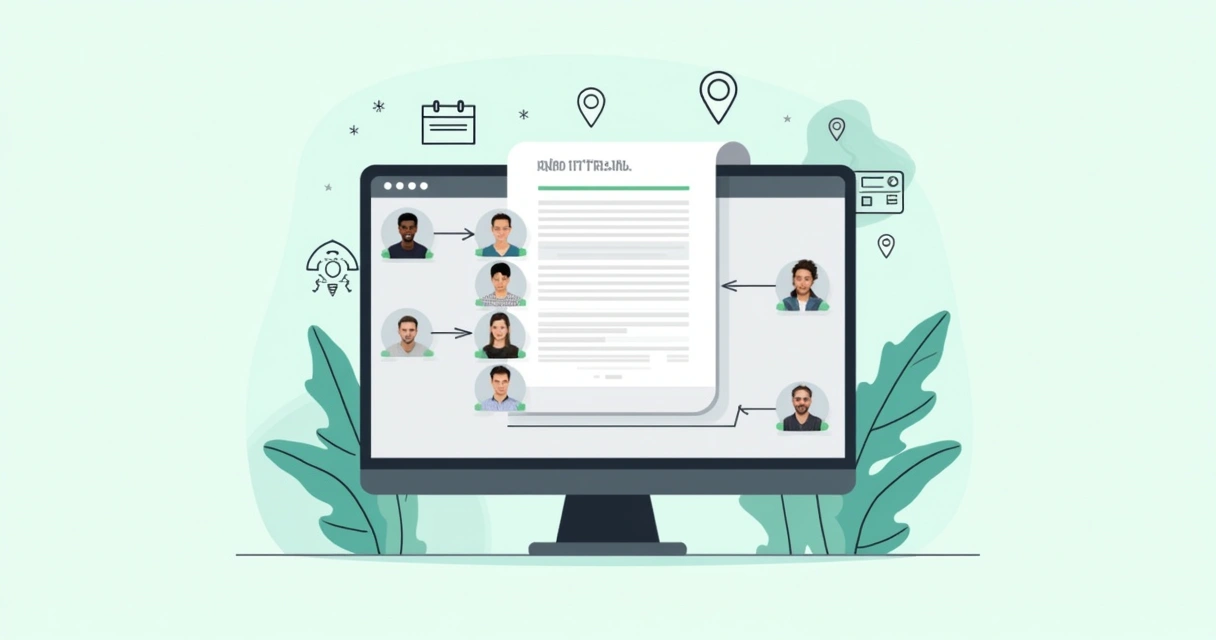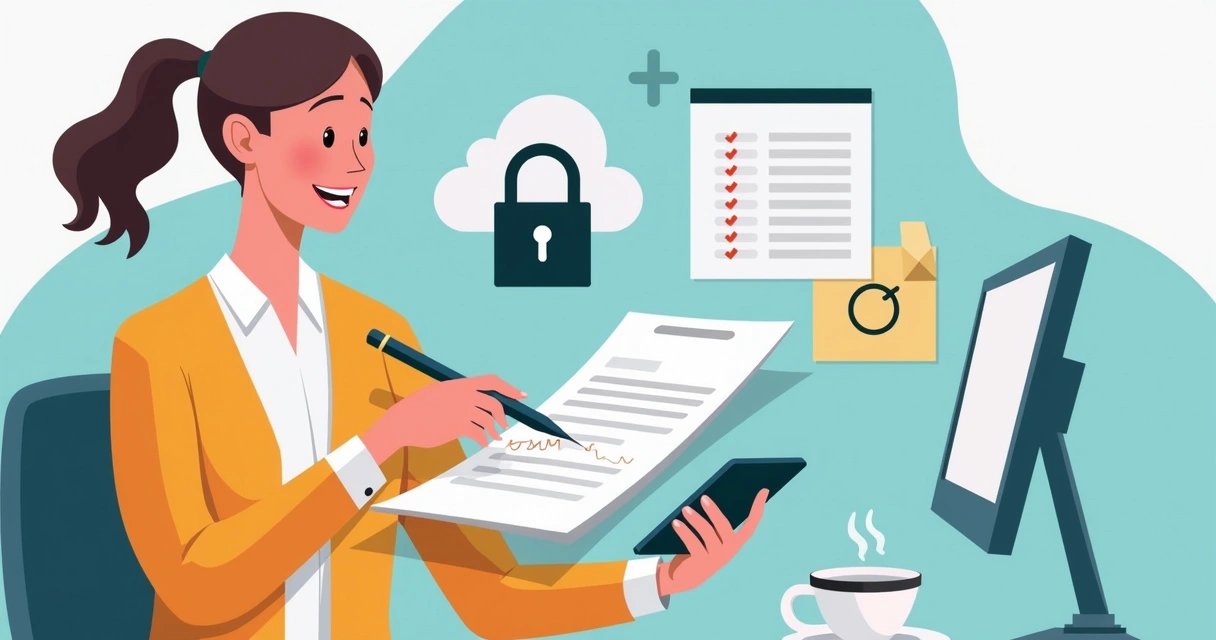In a world where time really does equal money, needing a physical pen is starting to look a bit outdated. Yet, the law still demands we sign countless contracts, from employment agreements, to sales deals, to official consents with lawyers or doctors. The answer? Digital signatures and electronic signing tools that promise speed, security, and peace of mind. But do they actually deliver all of that? How safe are these solutions? And above all, which e-signature programs in 2025 are shaping up as the most reliable for freelancers and big companies alike?
If you’re reading this, you’re probably looking for something better than chasing signatures across offices or cities. In Ireland and across the EU, electronic signatures are more than a convenience, they’re a necessity. I’ll walk you through the basics, explain how the top digital signing apps compare, and show you how tools like CloudSign.ie are helping businesses sign smarter, not just faster. And, if you’ve never used e-signatures, you’ll discover why millions now trust their deals to the cloud. Let’s start by understanding what makes “e-signature” more than a buzzword.
From paper to pixels: understanding the shift
Paper contracts filled filing cabinets for centuries. But with more deals now happening online, running document-signing the old way isn’t just slow, it’s risky when it comes to data security and compliance. The shift to esignature programs didn’t just happen overnight. It was a chain reaction, sparked by companies demanding faster deals and regulators pushing for clarity on digital signatures’ legal standing.
What happened next? The worldwide digital signature market exploded. According to Statista’s projections, this industry could be worth $66.01 billion by 2032. Hardly surprising, with every sector, from healthcare to government, needing safer, quicker ways to manage paperwork.
Speed isn’t the only story. Security and legality decided who won, and who lost.
Electronic signature or digital signature – what’s the difference?
This is where many get confused. “Electronic signature” and “digital signature” are tossed around as if they’re synonyms, but that’s not quite it. Both allow documents to be signed electronically, but the underlying technology and legal force can be miles apart.
- Electronic signature: A broad term covering any signature created, captured, or applied electronically. That might be typing your name, drawing it on a touchscreen, or even pasting a PNG into a document. On its own, it might not provide robust proof of authenticity, unless extra safeguards are used.
- Digital signature: A specific type of electronic signature backed by cryptographic protocols, securing the document against tampering. Digital signatures use unique digital certificates and encryption, giving courts and authorities a stronger way to verify authenticity and intent.
Does this really matter? In legal terms, definitely. Especially in Ireland and across the EU, both types are recognized, but only some meet GDPR and eIDAS requirements. There’s more about this in the latest Irish electronic signature laws for 2024. When in doubt, check what’s required for your industry, accounting firms might accept electronic signatures, while cross-border financial contracts could demand a digital signature.
Not every electronic signature is created equal. Don’t risk legal battles for convenience.
Legal status and compliance: signing with certainty
One hesitation I hear often is, “But will this signature actually hold up in court?” Short answer: yes, if you choose the right solution. Within the EU, eIDAS regulation (Electronic Identification and Trust Services) established clear categories:
- Simple electronic signature: Just a digital representation of your intent, often enough for day-to-day contracts.
- Advanced electronic signature: Must uniquely identify the signer and show clear intent, making use of secure processes.
- Qualified electronic signature: Uses a qualified certificate issued by a trusted authority. Legal effect is equivalent to a handwritten signature across the EU.
For business in Ireland, understanding electronic signature basics gives clarity. The key is not just if your signature is “valid”, but if your documents are easy to defend, proving who signed, where, and when.
Responsible e-signature programs offer:
- Comprehensive audit trails logging every action on every document, from opening to signing to downloading.
- Strong signer authentication, sometimes enhanced by two-factor authentication (SMS, WhatsApp, email, or biometric methods).
- Encryption in transit and at rest, safeguarding documents from interception or leaks.
- Tamper-evident seals, so you (and the courts) know if modifications happened after signing.
Modern platforms like CloudSign.ie meet, and often exceed, these legal requirements, focusing on practical, user-friendly experiences that stand up to regulatory review. According to the IEEE Computer Society, the best solutions combine encryption, evidence-based authentication, audit trails, and tamper alerts. So, no need to trust on “good enough” when proper solutions are available.

Why replacing pen-and-paper actually works
How much time do you lose printing contracts, arranging meetings, fixing lost paperwork, and chasing signatures? The gains from switching to e-signature programs run deeper than convenience.
- Teams can send a contract to Ireland, France, and Japan simultaneously, no courier needed.
- Notifications keep everyone in the loop, via SMS or WhatsApp, in real time, so no one forgets to sign.
- Audit trails reduce wasted hours verifying "who-signed-when", while templates save time drafting similar contracts.
- For compliance, GDPR rules are easier to follow through digital logs than with locked filing cabinets.
Let’s look at one real example: an Irish marketing agency signed client contracts using physical forms. Delays were endless. Moving to CloudSign.ie, they cut average contract closure from 8 days to just over 2. They automated reminders, allowed clients to sign via smartphone or laptop (in the office or from home), and used templates to generate agreements quickly. Errors dropped, and everyone involved could track progress instantly.
Even for freelancers, as discussed in this case about faster contracts for freelancers, the switch to e-signing tools meant more deals per month, less admin, and faster payments. Companies big and small report similar results. Sometimes the difference is measured in thousands of euros saved each year. Sometimes, it’s simply peace of mind.
Stop chasing signatures. Let the system do it for you.

Advanced features that matter in 2025
The jump from “basic e-signature” to “professional document management” happens when you use the right features the right way. Here’s what sets the best apps apart this year:
1. Automation of workflows- Route contracts for sequential or parallel signatures (handy in HR onboarding or multi-party deals).
- Alert the right person at the right time by automating reminders.
- Push data to your CRM automatically after completion.
- Connects with Google Drive, Slack, Microsoft Teams, Salesforce, or your favorite cloud storage.
- Lets teams access, send, and archive signed contracts from where they already work, no extra logins required.
- Set up instant alerts by SMS or WhatsApp, not just email.
- Ensure signers can’t “miss” a document even if they rarely check email.
- Create reusable templates for NDAs, partnership contracts, or work orders.
- Minimize repetitive manual work and cut down on errors.
Platforms like CloudSign.ie blend these advanced features into one user-friendly dashboard. Recent breakthroughs include artificial intelligence powering contract analysis, flagging risky clauses before anything is signed, or highlighting opportunities for negotiation. The role of AI, blockchain, and biometrics is only just beginning to change how securely, and smartly, deals get done.
Which esignature programs are really leading in 2025?
There’s no shortage of e-signing software, but some solutions get the details right, while others miss the mark or charge far too much. According to the latest industry reviews, standout platforms include (but are not limited to):
- CloudSign.ie , Prioritizes Irish and EU legal compliance, with AI-powered contract analysis and seamless cloud integration. Widely used from freelancers to large firms. Has a truly free forever plan for individuals, with 1 sender and up to 21 envelopes per month.
- DocuSign , Popular for its document tracking features and wide compatibility, yet often pricier for top-tier plans.
- Adobe Acrobat Sign , Trusted name, robust feature set, excellent legal compliance, but not always as intuitive for beginners.
- Dropbox Sign (formerly HelloSign) , Great if you’re already deep in the Dropbox ecosystem; offers strong cloud document workflows, though still catching up on advanced AI.
- PandaDoc , Noted for its professional document creation and CRM integration.
- eSignatures.io , Pay-as-you-go option, appealing for occasional users but lacking more advanced workflow features.
- SignNow , Tailored for large collaborations, supports bulk sending and multi-party approvals.
CloudSign.ie, especially for businesses in Ireland or operating across Europe, provides a fine-tuned fit for GDPR, national laws, and everyday business realities. For those starting small, you can sign a document online for free, a practical way to test things out before scaling up. Try sending a single contract and see the workflow in action.
Don’t pay for complexity you don’t need. Start with a free forever plan.
Security: what really counts
No e-signature program survives long if it fails on security. Data breaches or forged signatures could ruin reputations, cost big in fines, or even make signed contracts unenforceable. According to the IEEE Computer Society’s breakdown, the four features that matter most are:
- Encryption (usually asymmetric) making documents unreadable to anyone except sender and signer.
- Identity verification, including two-factor authentication or biometric checks where needed.
- Audit trails, so every action is time-stamped and recorded, defending your contract’s validity.
- Tamper-detection, proof that files were not altered after the signature event.
Some providers go further, CloudSign.ie, for example, adds threat detection and regular independent audits. Many now support advanced biometric options (like fingerprint validation or face recognition) for the most sensitive agreements, a trend driven by the increased use of AI and blockchain molds discussed in recent security analyses.
All this means you can send, sign, and store contract documents with less fear of data loss, crucial for industries like healthcare and finance, where regulations are especially strict.

Real results: faster, clearer, better
Plenty of case studies show how digital signing boosts speed and cuts uncertainty. One Dublin-based construction company shared a story: they used to shuttle contracts between city offices, sometimes taking days, even weeks, for big deals. As soon as they started using an e-signature program with workflow automation, contracts could be reviewed and signed from headquarters, site offices, or even client homes within hours. No missing paperwork, no delayed starts on new builds. Their finance department also gladly noted that audit-ready digital files made dealing with tax authorities much less stressful.
Another story comes from a small tech startup. Sharing contracts through secure links, tracking changes, and getting instant status updates let them close investment rounds much faster. Templates helped them send uniform NDAs to every new partner or beta tester.
And it’s not only for big companies. Individual consultants, self-employed legal advisors, and freelancers know that invoice delays often mean missed payment cycles. Moving to e-signature apps helped them close jobs faster and removed friction in the payment process. This is reflected in how small businesses speed up contracts and get paid with less back-and-forth.
E-Sign’s contributions in working across industries and reducing transaction times show that custom-fit solutions, not generic add-ons, deliver the real benefit (learn more from their review). Still, with CloudSign.ie focusing on Irish law, European Union standards, and practical automation, it stands out as a better option for many local businesses.
No more lost papers. No more “Did you get my email?” moments.

For beginners and established experts alike
If you’re new to electronic signing solutions, there’s no shame in starting with the basics. CloudSign.ie offers a step-by-step introduction at their beginner’s guide, breaking down what to look for and common pitfalls to avoid.
For companies already deep into digital transformation, advanced integrations, AI-powered analysis, and tight audit controls make the leap from scattered paperwork to centralized, well-managed deals smoother than ever before. Quick setup, learning curve as flat as possible, and ROI that’s real, not just theoretical.
CloudSign.ie, with its easy-to-use dashboard, compliance focus, and strong support for Irish and EU users, has become the preferred choice for many who value more than just “checking the box.” Still, the flexibility to scale up to enterprise, blend with cloud storage, or automate bulk workflows keeps larger organizations loyal. Either way, the era of endless paperwork and lost documents is quickly ending.
Conclusion
Paper signatures are fading into the past. Secure, fast, and legally valid e-signature software saves hours, reduces mistakes, and keeps everyone in sync, no matter where they are. Protecting contracts and personal data is not optional, and tools like CloudSign.ie have changed how Irish businesses manage documents, from first drafts to automatic renewals. With advanced workflows, smart reminders, and the security features demanded by modern compliance, the smartest organizations are those that stopped waiting for the postman and started closing deals online, confidently.
Ready to spend less time waiting and more time winning new clients? Start your next contract with CloudSign.ie’s free forever plan and experience how simple signing can be. Try it, see the difference, and never look back.
Frequently asked questions
What is an electronic signature program?
An electronic signature program is software that allows people to sign documents online instead of on paper. These tools make it possible to create, send, and sign agreements from any device, computer, tablet, or phone. They record who signed, when, and often include security checks (like two-factor authentication) to ensure signatures are authentic and legally binding.
How secure are e-signature solutions?
Reliable e-signature programs use advanced security measures. They encrypt your documents, track every action with an audit trail, and provide tamper-evident seals so no one can secretly change anything after it’s signed. Many solutions offer extra identity checks, such as SMS verification or biometrics, to keep your information safe. Security best practices are based on the recommendations from sources like the IEEE Computer Society.
What are the top e-signature tools?
The leading solutions in 2025 include CloudSign.ie for its strong European legal compliance and advanced workflow features, DocuSign for global compatibility and document tracking, Adobe Acrobat Sign for robust feature sets, Dropbox Sign for cloud integrations, PandaDoc for document creation, eSignatures.io for occasional users, and SignNow for multi-party collaboration. Industry reviews from platforms like Tom's Guide confirm these as the most trusted options.
How much do e-signature services cost?
Pricing varies. Some platforms like CloudSign.ie have a free forever plan for individuals. Business-oriented plans usually start with a monthly fee per user and increase if you add advanced features or need more signatures per month. Additional integrations or AI-powered analysis may cost extra, but the savings on time and printing usually outweigh the fees. Some apps, like eSignatures.io, offer pay-as-you-go models, but for continuous business use, subscription plans often make more sense.
Can I sign documents on my phone?
Yes, nearly all modern electronic signing apps are mobile-friendly. You can view, sign, and send contracts using a smartphone or tablet. Most platforms also offer dedicated apps for iOS and Android, with touch-screen signatures and secure access. Look for services that provide strong mobile security controls, including device authentication and encryption for your privacy.
